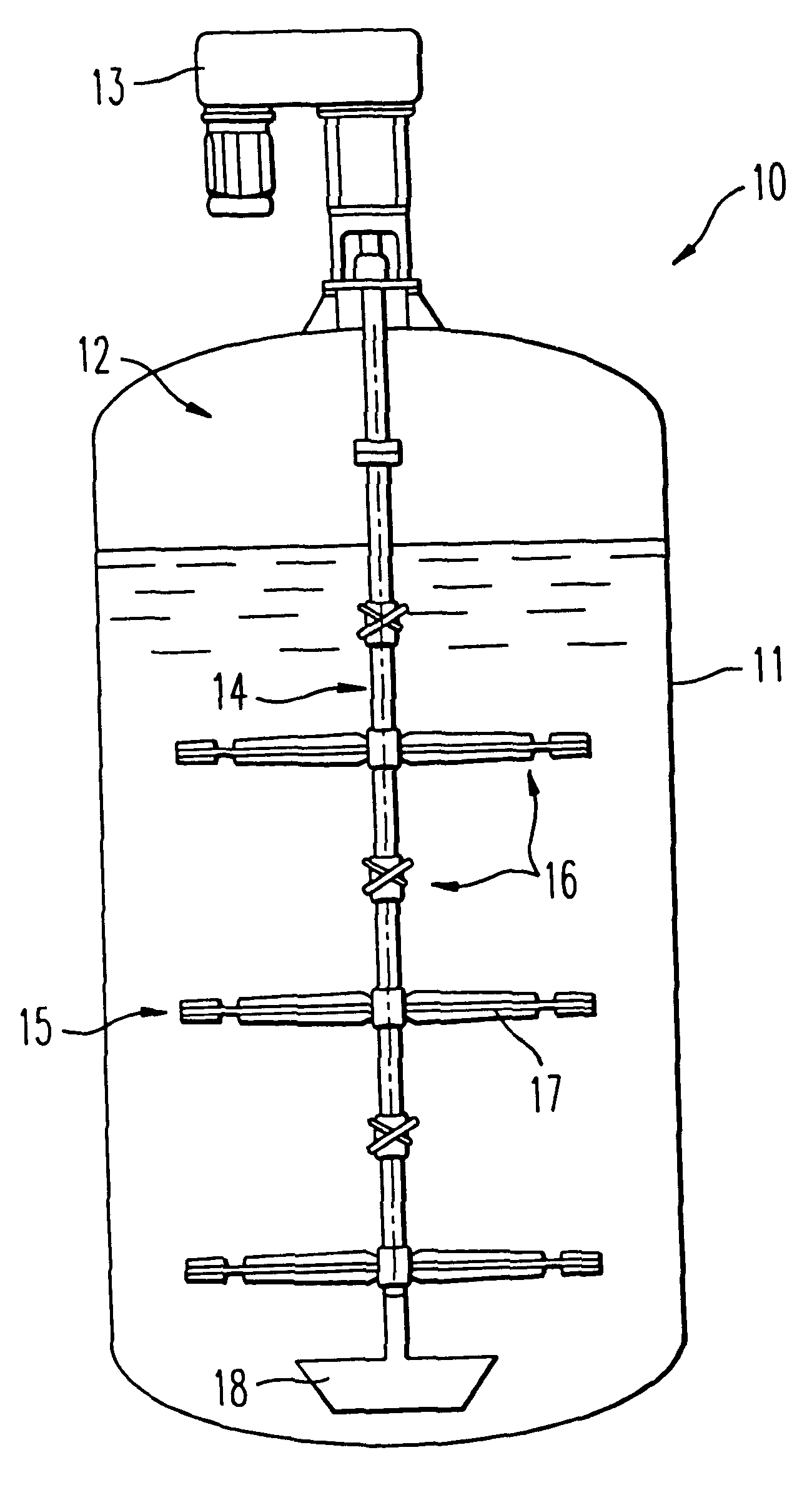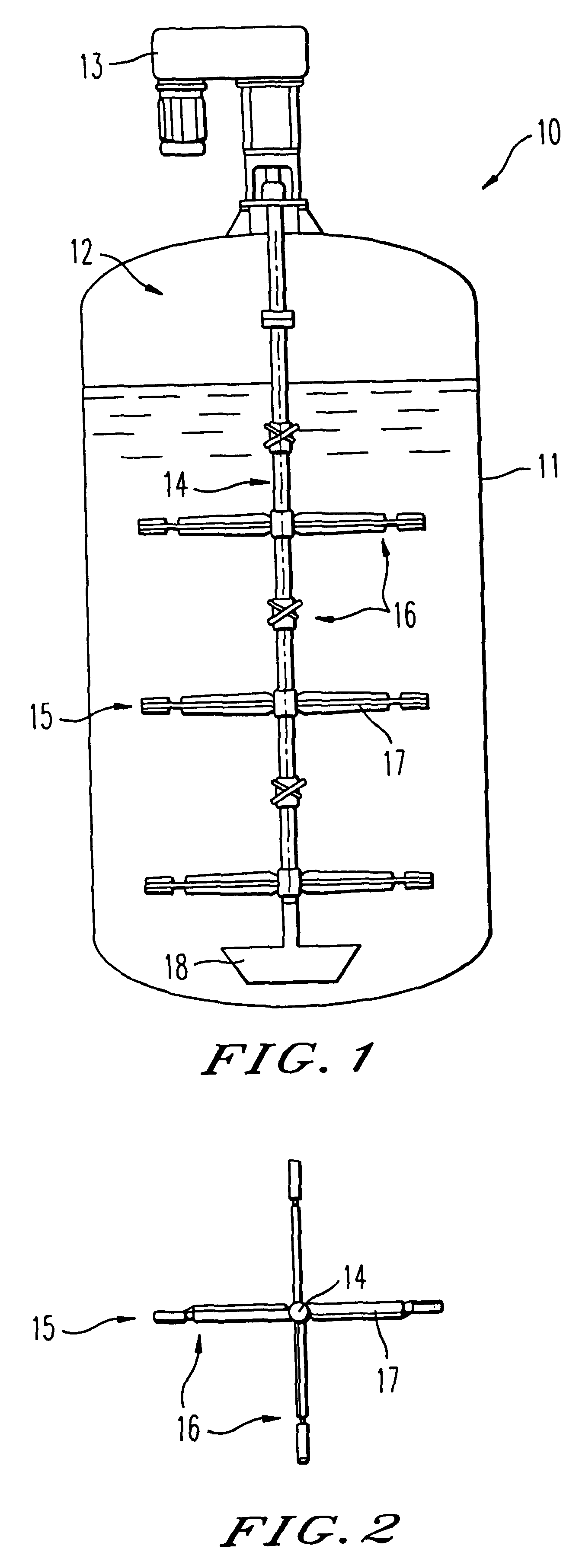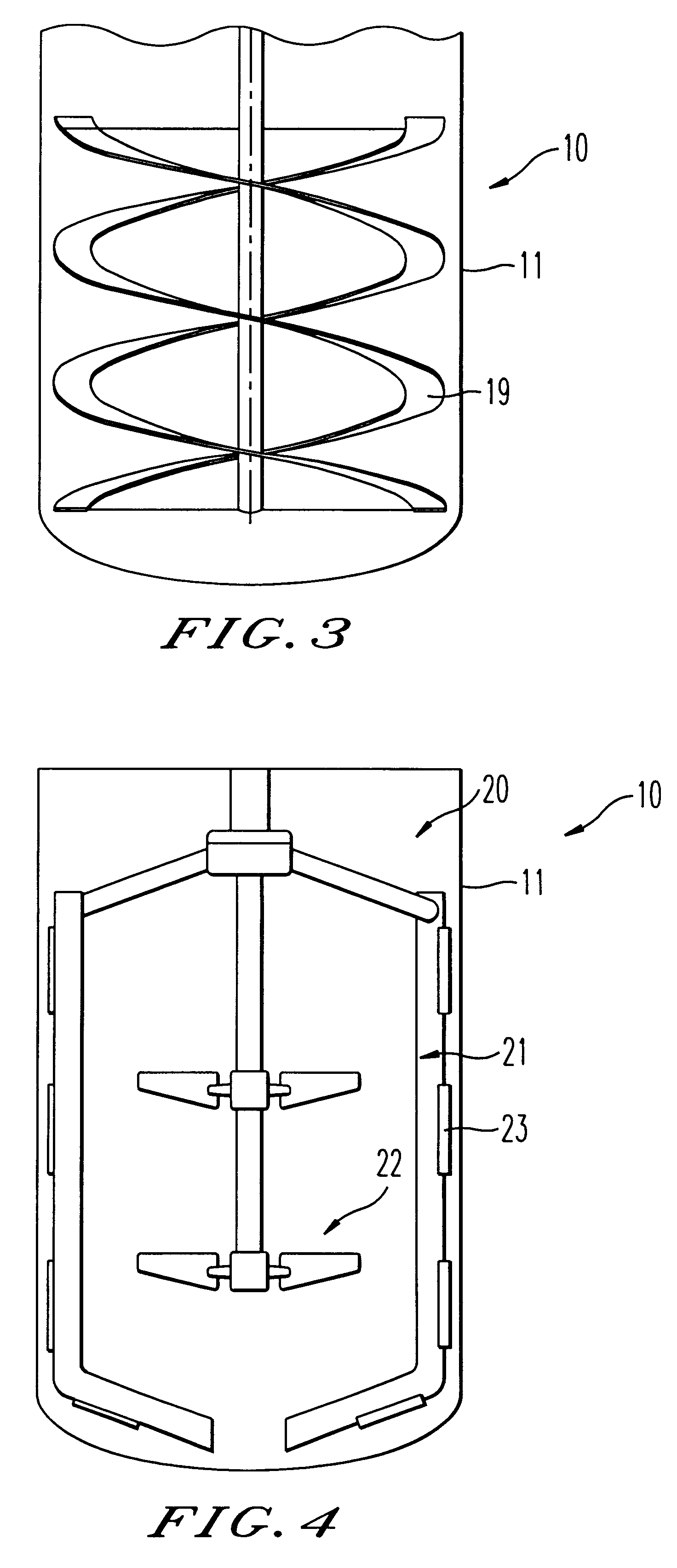Use of a single-stage or multistage stirrer to prepare polymers
- Summary
- Abstract
- Description
- Claims
- Application Information
AI Technical Summary
Benefits of technology
Problems solved by technology
Method used
Image
Examples
example 2
Example 1 is repeated in an 18 m.sup.3 reactor of the same construction (same height / diameter ratio and same cooling jacket), having a 4-stage MIG stirrer (d / D=0.85) with blade stages rotationally offset relative to one another by 90.degree.. The stirrer speed is raised to 40 rpm and the total cooling capacity is utilized. In this case the feed time of the monomer emulsion can be reduced to 180 min; the initiator solution is run in for 30 minutes longer as in Example 1. Subsequent procedure is as in the case of Example 1. A coagulum-free dispersion having a solids content of 55.4%, a pH of 7.5, an LT of 50%, a viscosity of 80 mPas and a content of fine coagulum of 0.001% is obtained. The particle size distribution (PSD) is tetramodal (see Tab. 1). There is no wall deposit. The use of a multistage stirrer permits the same amount of heat to be dissipated in a shorter time, reduces the formation of wall deposits and the content of fine coagulum, and leads to a reproducible PSD when 10 ...
example 3
Example 2 is repeated in the same reactor with the difference that the feed streams are fed in through the reactor floor and the stirrer speed is raised to 43 rpm. In this case, the feed time of the monomer emulsion can be reduced to 165 min. The initiator solution is again run in for 30 minutes longer. A coagulum-free dispersion having a solids content of 55.3%, a pH of 7.5, an LT of 49%, a viscosity of 78 mPas and a content of fine coagulum of 0.001% is obtained. The PSD is tetramodal (see Tab. 1). There is no wall deposit.
example 4
Example 2 is repeated in the same reactor with the difference that a feed stream consisting of acrylonitrile and butyl acrylate and a second, aqueous feed stream consisting of water, acrylic acid, emulsifiers and sodium persulfate (proportions as in Example 1) are fed into the reactor from below. The two streams are mixed shortly before entering the reactor. In this case the stirrer speed is raised to 45 rpm and the feed time is extended to 180 minutes. The aqueous feed stream is run in more slowly by 15 minutes. After complete addition, the batch is held at polymerization temperature for 2 hours more, cooled and filtered to remove coagulum. A dispersion with a solids content of 55.3% and a pH of 7.8 is obtained. The PSD and viscosity are not significantly different from that of Example 3.
PUM
| Property | Measurement | Unit |
|---|---|---|
| Fraction | aaaaa | aaaaa |
| Fraction | aaaaa | aaaaa |
| Fraction | aaaaa | aaaaa |
Abstract
Description
Claims
Application Information
 Login to View More
Login to View More - R&D
- Intellectual Property
- Life Sciences
- Materials
- Tech Scout
- Unparalleled Data Quality
- Higher Quality Content
- 60% Fewer Hallucinations
Browse by: Latest US Patents, China's latest patents, Technical Efficacy Thesaurus, Application Domain, Technology Topic, Popular Technical Reports.
© 2025 PatSnap. All rights reserved.Legal|Privacy policy|Modern Slavery Act Transparency Statement|Sitemap|About US| Contact US: help@patsnap.com



